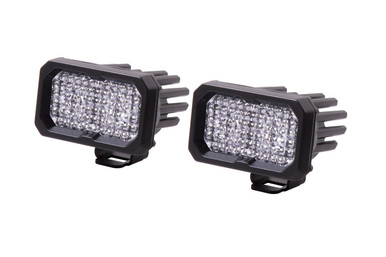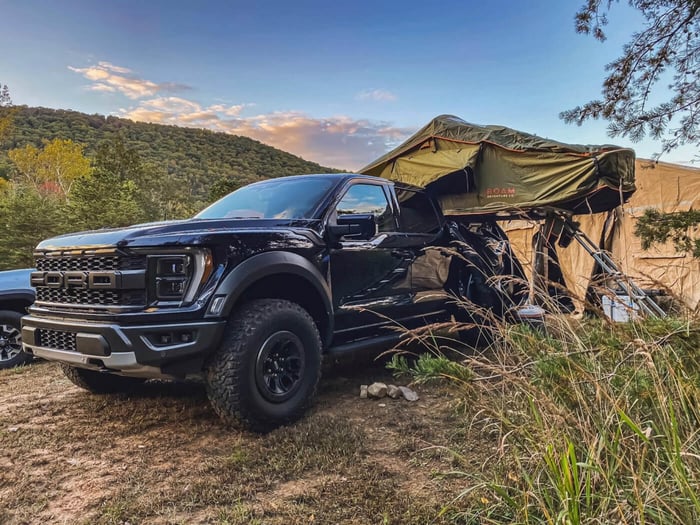
Understanding Aftermarket Lighting Upgrades
If you own an off-road truck or SUV, the odds are you’ve considered aftermarket lighting. Off-road lights are one of the hallmarks of the stereotypical off-road look that comes to mind when people think of our sport–big tires, lifted suspensions, lights for days, and mud up to the roof rack. Although not every vehicle needs a massive lightbar to hit the trail, most builds can benefit from more light than the manufacturer installed when it rolled off the factory line. While every off-roader might have a different idea of what the right lighting entails for their rig, the market is filled with options that let your vehicle rise to meet the task at hand. Sometimes it can feel like there are too many options.
An Overabundance of Options
It can be easy to lose yourself trying to make a decision on your truck’s aftermarket lighting. With all the beam patterns, bulb types, mounts, styles, and purposes, it can be hard to understand where to assign your budget dollars when planning the lights for your build. We’re going to take a look at some basics of lighting, what the best tools are for a specific job, and how you can make sure your truck is ready to handle the demands off-road lights can put on its electrical system.
Find Your Range
Before we look at the style of lights available, you want to understand where you need aftermarket lighting to reach–not just a distance in front of you, but what kind of side, rear, or under-vehicle illumination is needed. This comes down to two things: your off-road activities and your personal preferences. Depending on whether you love overlanding, crawling rocks, or slinging mud, you could have vastly different lighting requirements to operate your vehicle safely. Outside of those requirements, you might prefer more light, a different hue of lighting, or want your light to come at the covered area from a different angle. As a starting place, however:
- Low And Slow - Rock crawlers and those who frequently find themselves doing technically complex off-roading that requires low speed and an eye for danger are primarily going to be worried about aftermarket lighting that spreads the lumens around the immediate vicinity of the vehicle, both directly in front of and behind the path of travel as well as to the side. This allows for maximum awareness of your surroundings without the distractions of a longer-range field of view.
- Mid-Range For Motion - These lights are primarily throwing light out in front of you to let you see the trail ahead, but they still offer plenty of diffusion to help you see wildlife, trees, and other hazards you’ll want to avoid as you approach and pass them. Think in terms of your low beam headlights, which provide suitable lighting for the moderate-speed driving you do around town.
- Go Faster, Look Farther - The faster you’re going, the further ahead you need to see. If your off-roading comes in a high-speed flavor that focuses on straight-line driving rather than tight cornering or sharp stones waiting to crack open your transmission, then you need aftermarket lighting that throws a lot of light in a tightly focused beam that’s mounted higher to help you look out over obstructions and spot the hazards to avoid in your trek.
Get Some Color
Aftermarket off-road lighting doesn’t just offer you more light. It can also offer you different qualities of light dispensing on your bulb. Temperature is closely related to lighting, with bulbs in the 1000 K (Kelvin) range giving a rich, amber light on one end of the spectrum and a purer white light when temperatures reach around 7000 K. Yellow light is said to help pick out motion and aid in picking out detail in low-light environments. White light is generally perceived as brighter (especially to those who find themselves in the path of your “photon cannons”), and the purer the white, the more likely colors will seem to shift towards a blue spectrum as your eyes adjust.
Blowing Up Bulbs
Aftermarket lighting bulbs have come a long way, with technology advancing to provide bulbs that burn brighter, longer, and more reliably than previous generations. Understanding the differences between types of bulbs, however, is important, as each style comes with its own benefits and drawbacks.
- Halogen - These conventional bulbs still have a place in the hearts of many off-roaders. These incandescent bulbs are the old-school glass bulb and burning filament-style off-road lights that are still used on many stock vehicle lighting systems. They use plenty of electricity to put out a moderate amount of visible light (usually in the warmer yellow-spectrum), but they’re relatively inexpensive to replace.
- HID - High-intensity discharge bulbs use less energy to create a bright arc of electricity in a sealed glass tube rather than a burning filament. Their light output is usually cooler, offering a brighter white light with bulbs that still offer the classic halogen-style look on your truck. They cost more than Halogen lights, generally offer less light for more energy than our next bulb type, and can require external ballasts that give you one more vehicle component to worry about.
- LED - Light Emitting Diodes are fast becoming the bulb of choice not just in off-roading but for electronics, offices, and households. LED aftermarket lighting is energy-efficient, long-lasting, and available in an array of colors to suit your preferences, although some find LED white-light too blue. The major downside to LEDs is the initial start-up costs related to equivalent halogen bulbs, although once replacement is factored in, LEDs gain ground quickly.
Top Lighting Options
Once you understand what quality of light you’re looking for and where you want your aftermarket lighting to throw that light, you’re ready to start planning your build. Off-road lights come in a variety of configurations so you can make the most of your truck customizations, from bumpers that are ready for some light pods to a rack that’s ready to support a light bar. While every build is different, some of the most popular aftermarket lighting choices are a good fit for most off-road use.
Fog Lamps - These low beams give you a spread of light under the fog directly in front of your vehicle in a wide arc. This also makes them good for when you need to keep your speed down and focus on avoiding obstacles. Our own Dual-Bezel Fog Light Kits for the 2017-2020 and 2021+ Ford Raptor were created to fill this need for the popular (and our personal favorite) off-road truck that needed better lighting options with a finished appearance. Powered by some serious light pods from Baja Designs, they give plenty of close-in light for extreme navigation.
Rock Lights - These small lights are usually installed under the vehicle, pointing down to provide plenty of ultra close-in coverage for your spotter when hitting the rocks. That way, they can easily see the rocks under your vehicle as they guide you past dangerous outcroppings and obstacles. This 6-pack Rock Light Kit from RIGID gives you the lights you need to outfit an entire vehicle in one easy pack.
Flood Lights - These bulbs are made to flood an area with light across a wider area. When installed properly, they let you see the general area around your vehicle, which is why they are often mounted on the front and sides via roof bars or chase rack beams, to provide a wide swathe greater than 180-degrees so you can see not only in front of you but potential obstacles and complications to the side of the vehicle as well. Another good use for flood beams, like these from Diode Dynamics, is to keep the night lit up once the sun goes down, whether it’s party time or repair time for someone who needed better lights to see those rocks.
Driving Lights - Even when you’re rock crawling, you need to drive to and from the rocks. That’s where driving lights come in. Similar to the high beams in your truck, they offer a more focused beam of light than a floodlight, so you can see better farther. Often mounted on-level with or higher than your truck’s headlights, aftermarket lighting like the Baja Designs LP6 LED Combo gives you both the focused straight-ahead driving beam and mid-range side illumination to better spot obstacles and wildlife at speed to give you more time to avoid them or help you take safer turns at higher speeds.
Spot Lights - For the longer range illumination you need at higher speeds, it’s best to lift those lights as high as you can and find bulbs that project a narrow, more focused beam of light into a single spot. This is where the iconic KC HiLites roof-mounted light bar comes in. If a bar isn’t your style, lighted roof racks also provide plenty of light and range while also giving you a solid platform for your gear, supplies, or a rooftop tent.
Reverse Lighting - An often-overlooked part of aftermarket lighting is your reverse lights. Stock lighting behind your vehicle is designed to get you out of parking spaces safely. Off-road truck lights installed on the back of your vehicle are a necessity for multi-point turns, safe operation of the vehicle in and around camp, or when an…operational test…happens to coincide with someone riding on your rear bumper on the way to the trail.
Supporting A Brighter Future
You know what you’re looking for in aftermarket lighting, but don’t forget you have to power those new pods. That can include using a second battery kit from Genesis Off-Road to make sure you don’t drain your primary battery while keeping the fun going after dark, improving your wiring harness set-up to manage more light sources, and choosing the off-road light switches you need to put control of your lights at your fingertips. These provide the electrical infrastructure you need to build a serious illumination plan for your adventures.
The Most Trusted Lights Off The Asphalt
As experienced off-roaders, we know the pain of not having enough of the right light when you need it and the white-knuckled driving that can come from it. That’s why we offer our customers the same top-brand parts we run on our trucks at a fair price, ready to deliver, and backed by our old-school customer service. Order your aftermarket off-road lighting from Offroad Alliance today.









